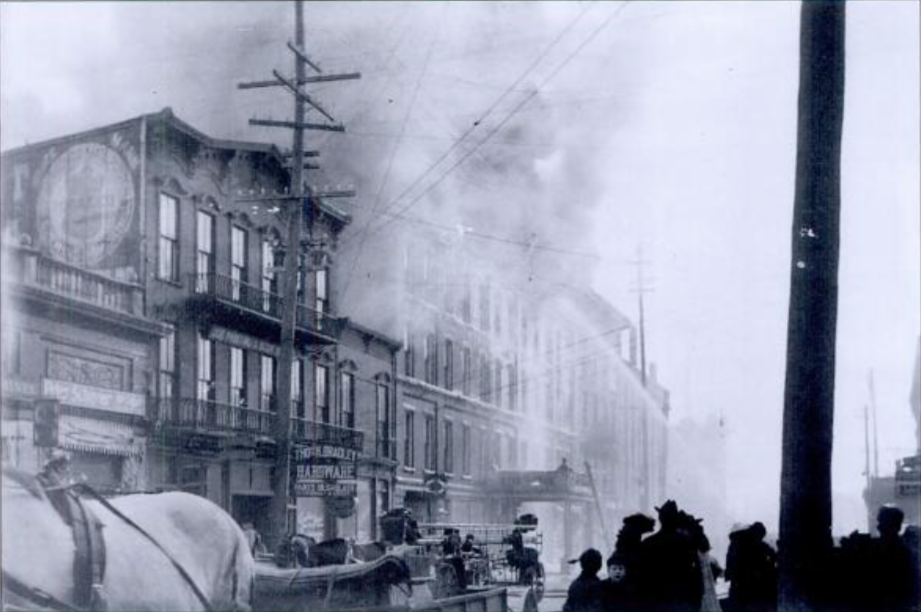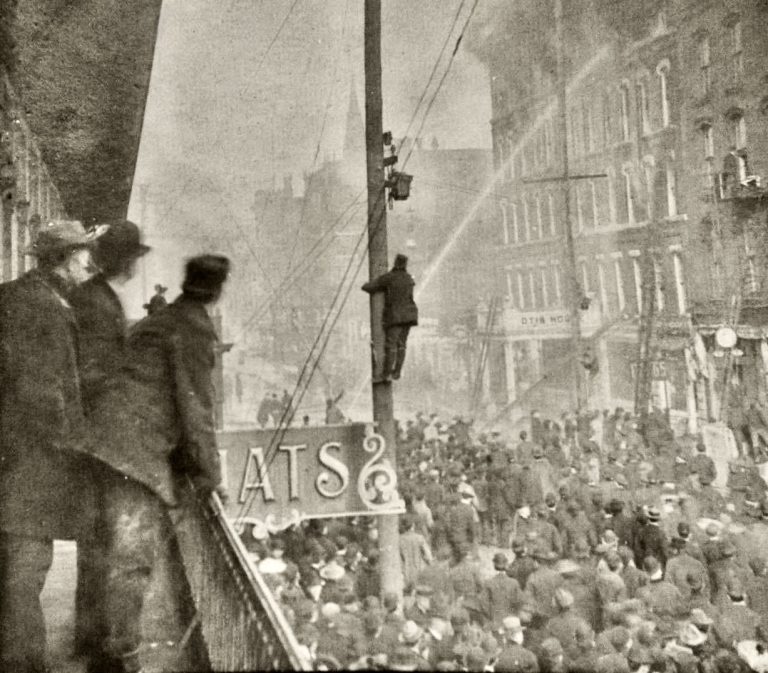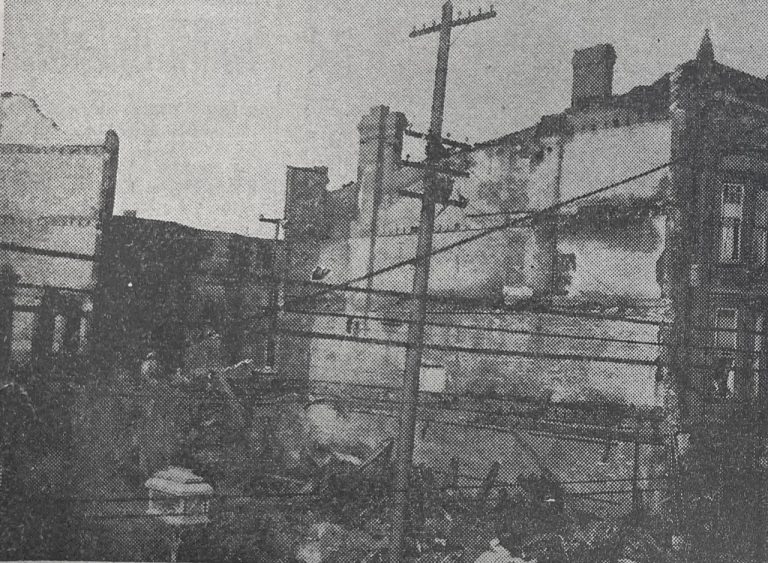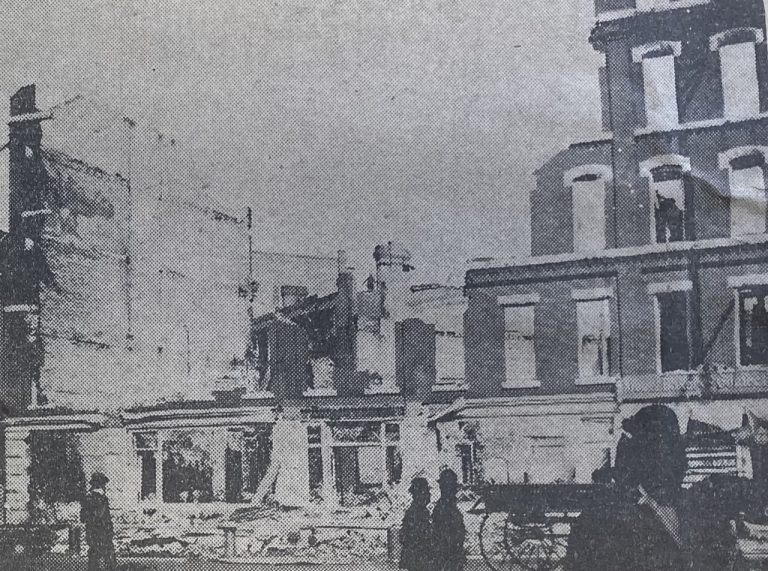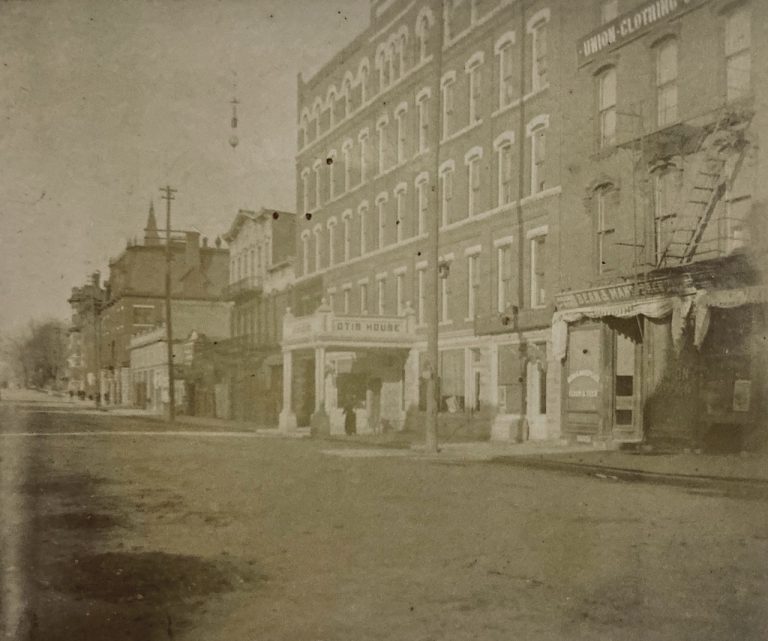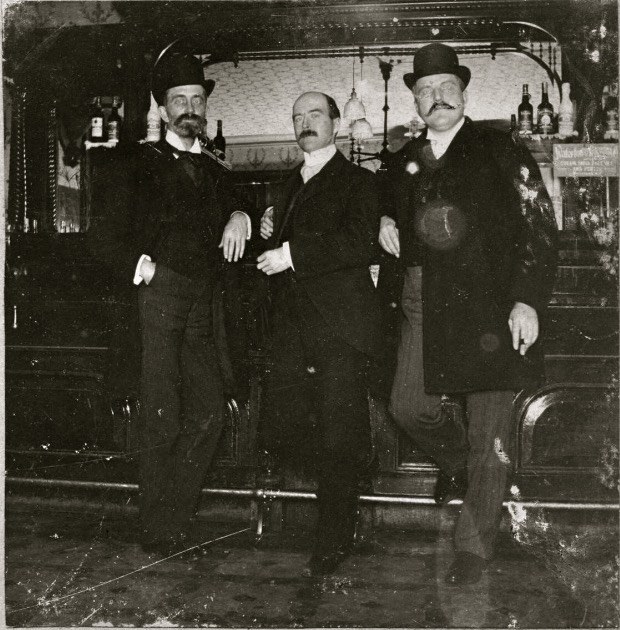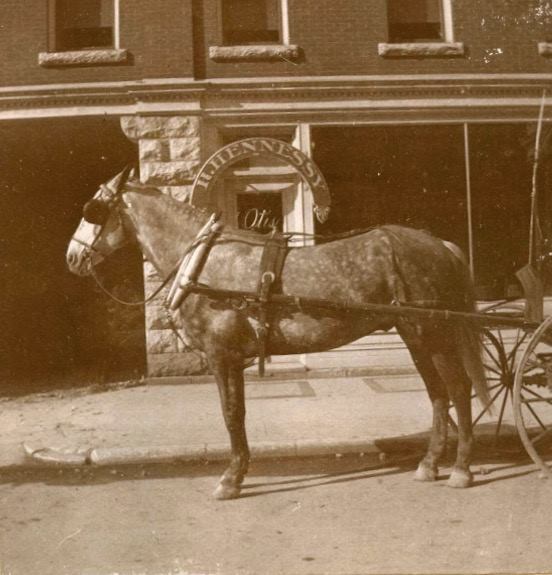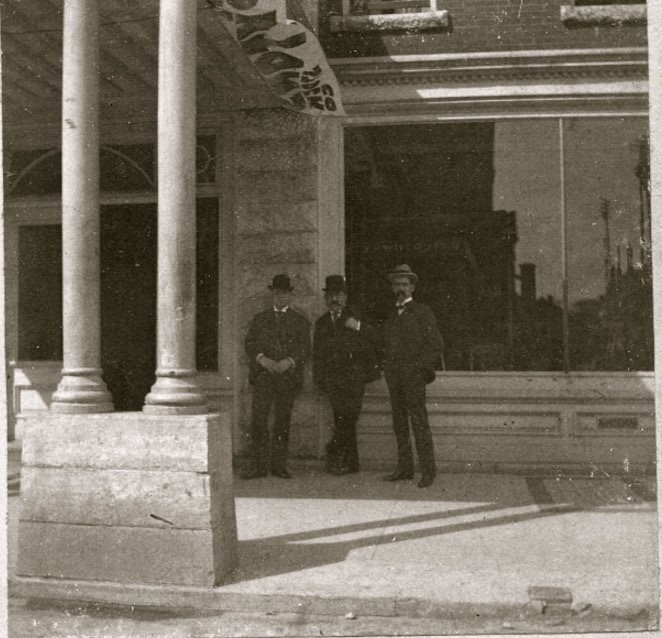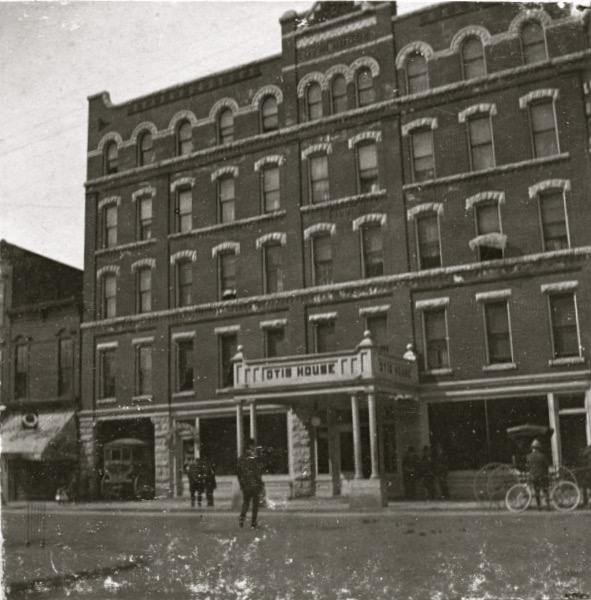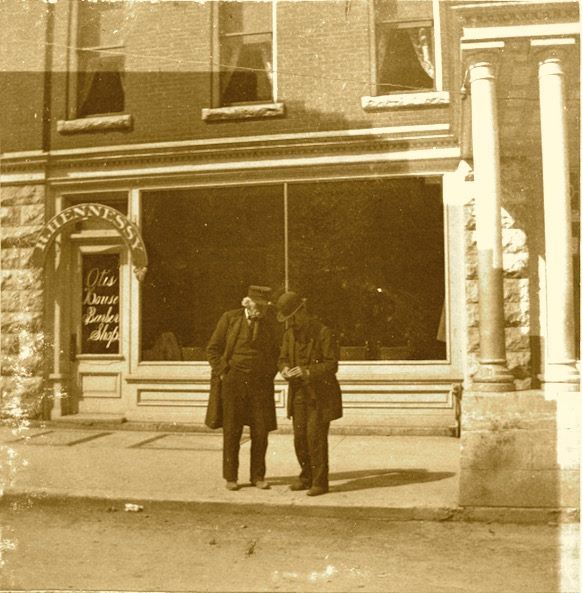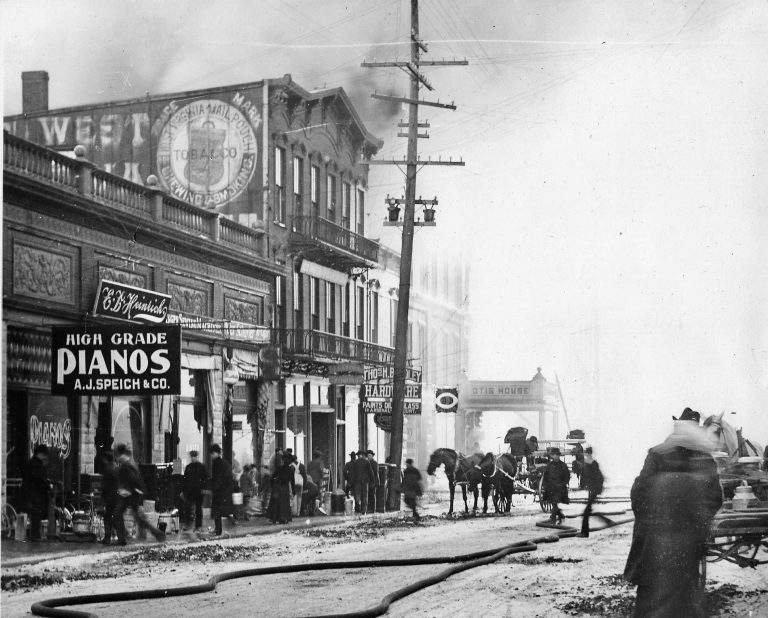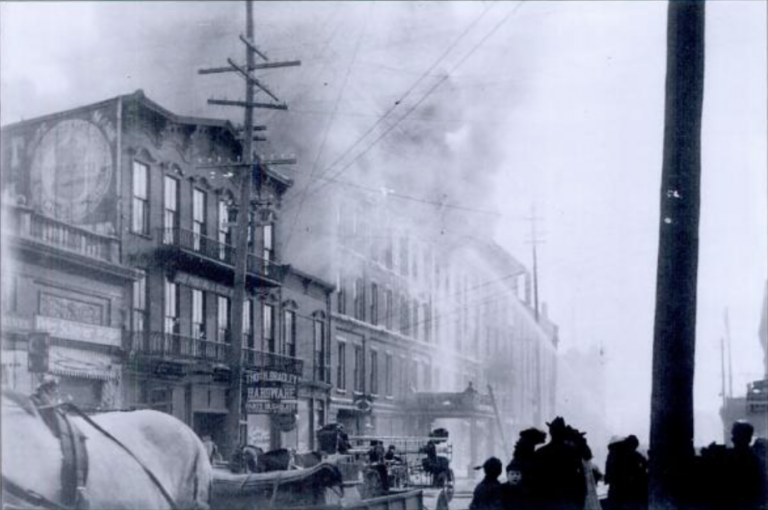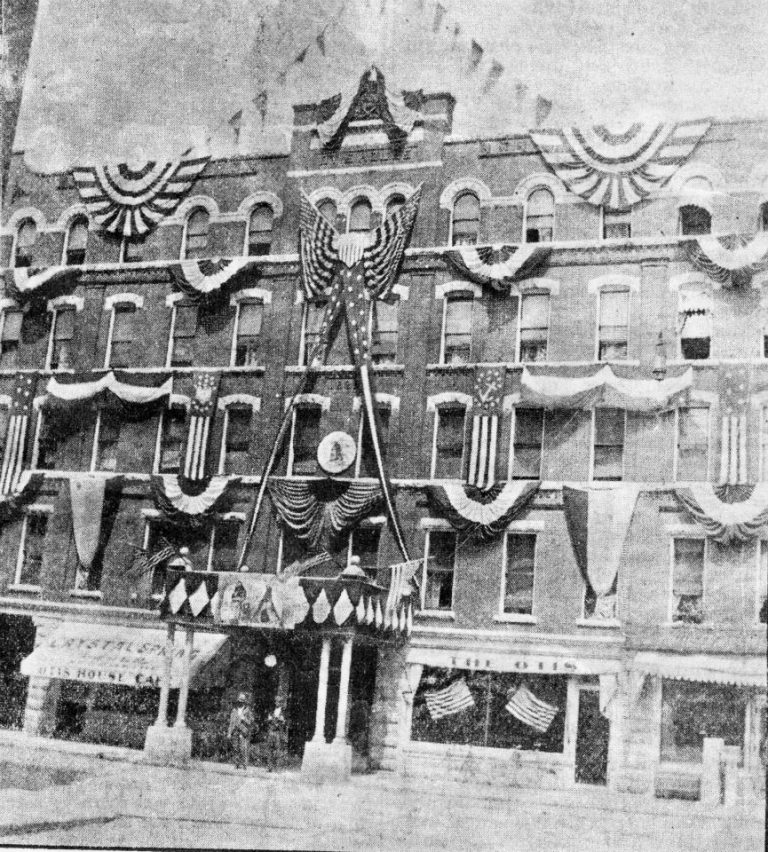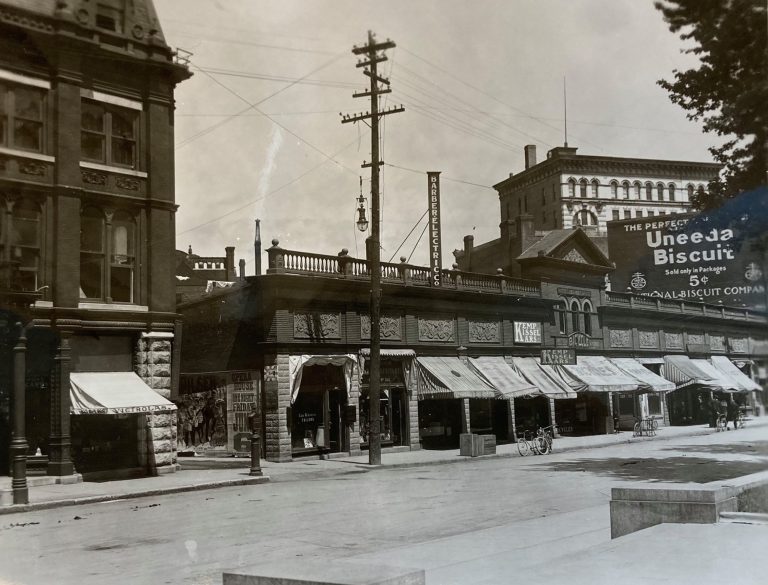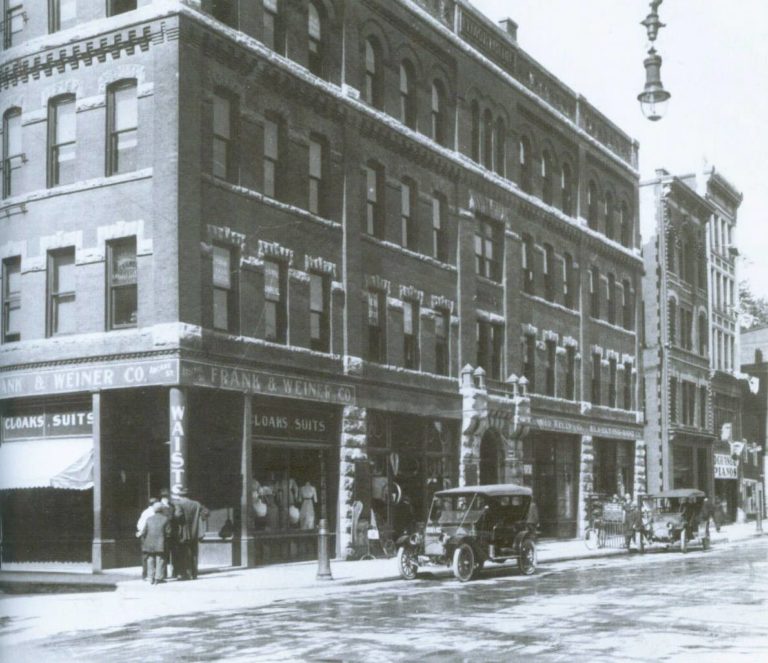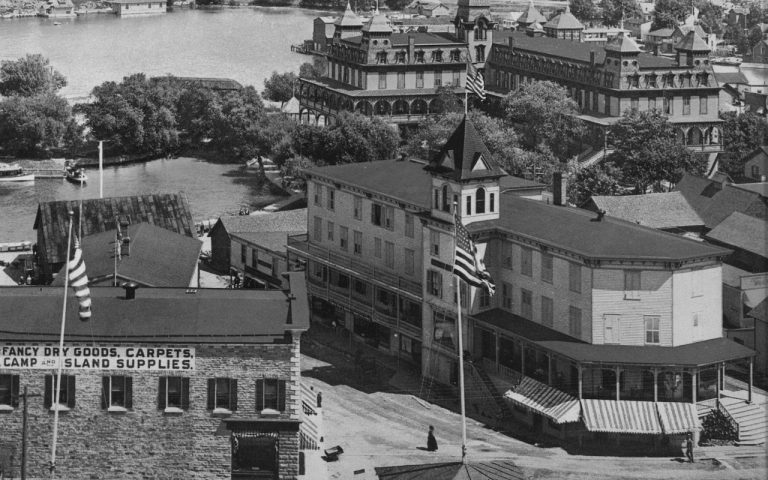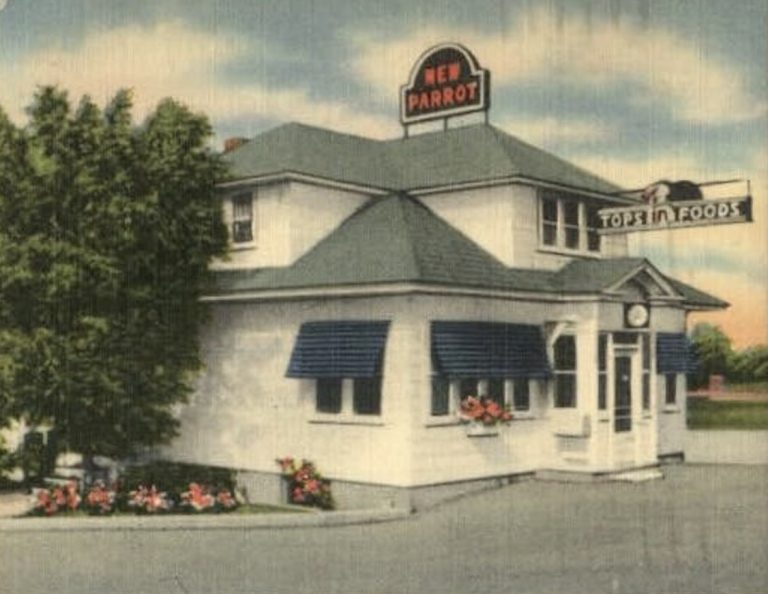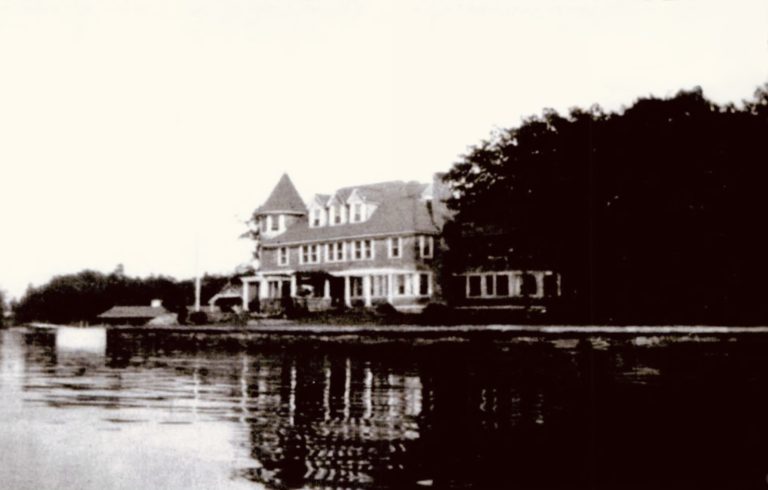The Otis House Fire Was The Most Destructive In Watertown Since 1849
The Otis House on Arsenal Street opened in 1891, but it was actually the result of a major renovation and remodeling of the Globe Hotel, which opened 40 years prior, just after the great fire of 1849. The Otis House would draw rave reviews and feature some amenities that no other hotel in Northern New York could boast at the time. Ironically, in 1903, it would fall victim to Watertown’s worst fire since the Great Fire itself.

Born from the ashes of the Columbian Hotel, destroyed by the great fire of 1849, was the Globe Hotel. When it opened in 1851, W. B. Manvilee was its proprietor and set out to draw customers with an advertisement in the Northern New York Journal—
I have just completed and purchased this New Hotel, which is situated between Court and Arsenal Streets, fronting on each, and am now ready to entertain the public. My rooms are of good size, airy and well adapted to the business. The location is the most central and convenient in town, and I am determed (sic) to render my House a desirable stopping place. The Barns, Stables, Yards and Sheds are unequalled. And attached is a Livery Establishment, which will, as usual, be kept in nice condition, and ready to use.
W. B. Manville
Watertown, June 16, 1851.
The Globe would open to rave reviews in the New York Reformer, which called it a “truly splendid hotel.” The Reformer’s one grief, considering it was the area of a temperance movement, was that the Globe Hotel had a bar in the basement; nevertheless, “out of the way of boarders and travelers as much as possible.” It was also noted that boarders and travelers could take their meals on the “European plan,” instead of going to the Dining Hall if they choose (the European plan means meals are not included in the stay.)
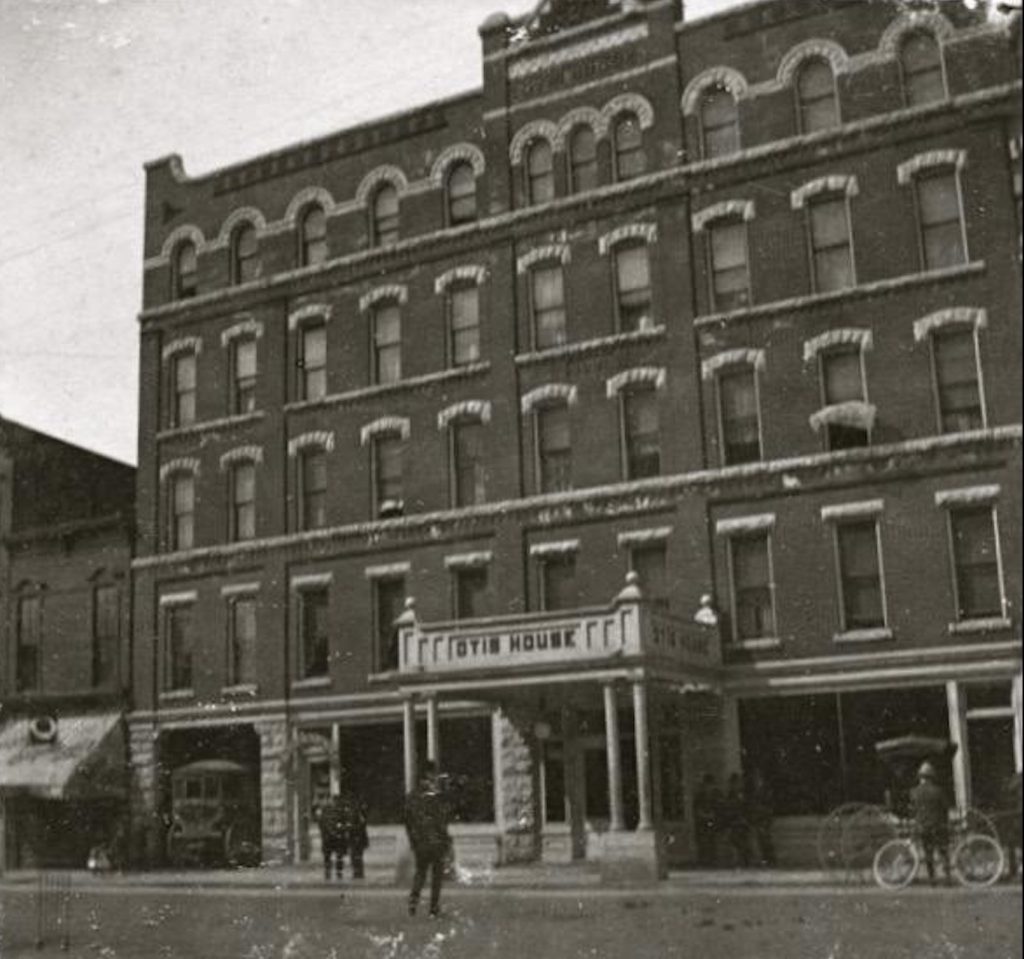
In January 1891, news broke that the Globe Hotel would be getting a big makeover. As reported in the Watertown Daily Times–
The Globe Hotel to be remodeled and rebuilt throughout, fitted with steam heat, elevator and all the latest improvements, the building raised one story in height, and an extension that will be double the capacity of the hotel built.
The Court Street side would have its first floor occupied by stores, with only one facing Arsenal Street. Likewise, the Arsenal Street side would be five stories and the Court Street four stories, with a ladies’ entrance on that side.
In November of 1891, as the Otis House was nearing completion, the Watertown Daily Times reported some of the hotel’s features–
The Otis Block which has taken the place of what was formerly the Globe hotel and in which the new Otis House is located, may well be placed in the category of the finest appearing buildings in this city, and the lighted and ventilated interior fully justifies the impression created by the exterior stateliness and beauty of the structure.
Every apartment in the house will be connected with the office by annunciators, speaking tubes and electric bells. A large, handsome elevator supplies each floor with further easy communication with the ground floor, and there are five other means of egress in case of necessity by fire or other cause.
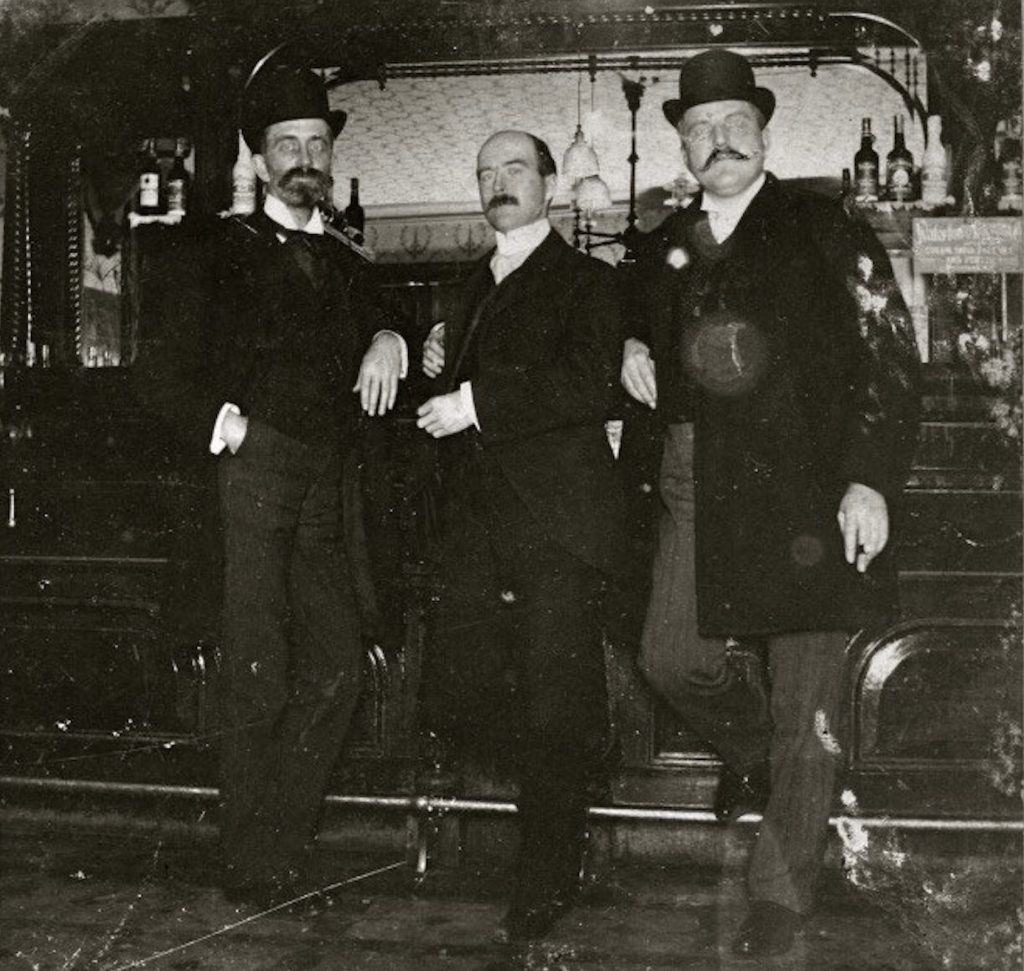
In addition, the room would be furnished at an estimated cost of $15,000 (nearly $450,000 in today’s currency). A barbershop on the first floor, occupied and operated by R. Hennessy, was located near the main office and had its own entrance, which can be seen in some photos. A quartered, oak staircase in the lobby leading to the second floor was described as a “thing of beauty.” The Otis Hotel would officially open on March 10, 1892, with 100 rooms available, and its first meal would be served at noon.
The Otis House Fire, March 6, 1903
At about 8:25 a.m., Richard Hennessy was shaving a man in his barbershop inside the Otis House when he first smelled smoke. As he looked around, he saw smoke wafting up from the floor and had one of his assistants investigate. Upon opening, the cellar door burst into flames.
The assistant attempted to telephone Engine House no. 1 on Stone Street, but there were communication issues. Instead, he sent another to the engine house, but a third person across the street noticed the smoke outside and ran to the call box to initiate the alarm at the American Corner. When the firemen arrived, flames had reached the roof via the elevator shaft and spread quickly.
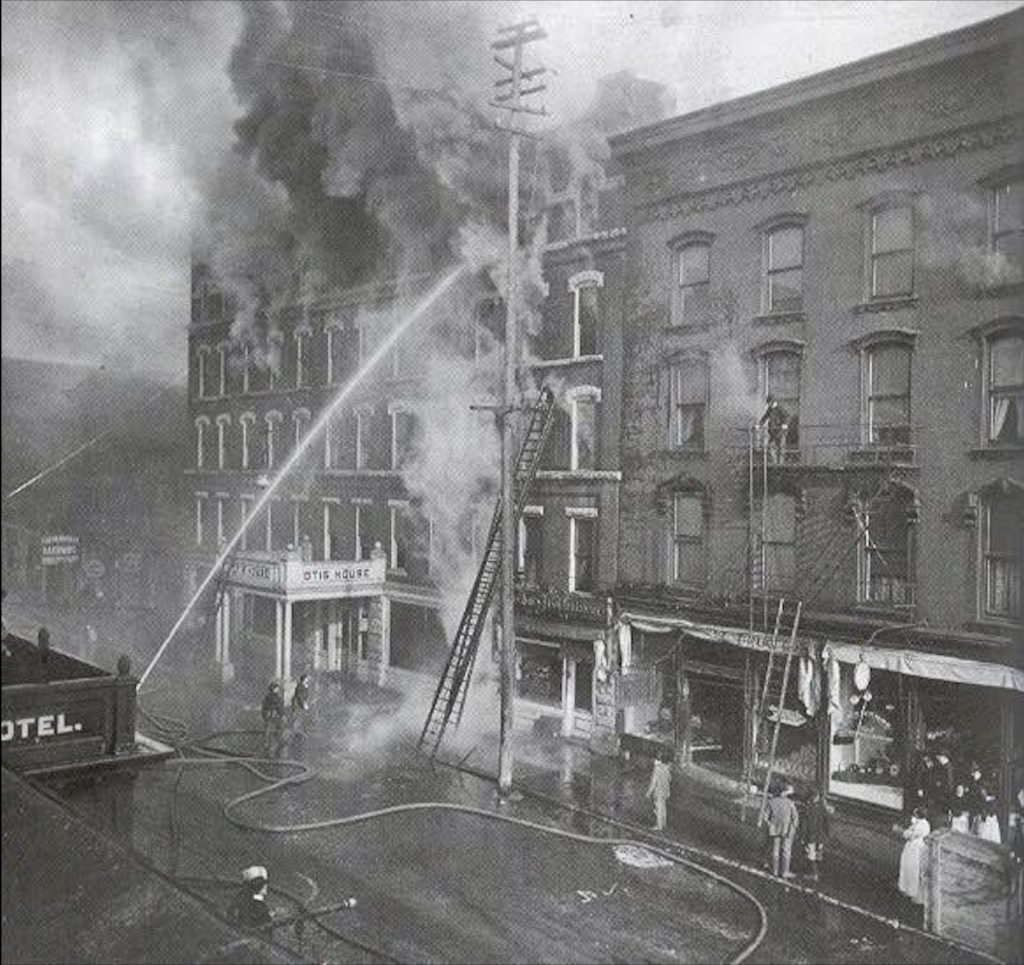
According to the Daily Times, the firemen were further handicapped–
The firemen were handicapped by the low water pressure at the hydrants and the fact they had no ladders long enough for any adequate service. When it was necessary to take a stream to the roofs of adjoining blocks, the hose had to be pulled up with ropes. The firemen fought like fiends and took all sorts of chances. The old volunteers turned out, and “Jack” Barry, the president of the Volunteers’ association, did valiant service with many of his comrades.
In addition to the volunteers and the Factory, Stone, and Curtis Street engine houses, the city also received help from the Carthage and Dexter fire departments, a combined 75 men strong who arrived to cheers between 10:00 – 10:30 a.m. But, almost immediately after the arrival of city firefighters, the building appeared to be doomed, and efforts focused on rescuing people as flames in the elevator shaft and stairway prevented egress other than by window. Bellboys were alerted to notify the occupants on the upper floors, and then some slid down ropes in rooms, injuring their hands “considerably” as a result.
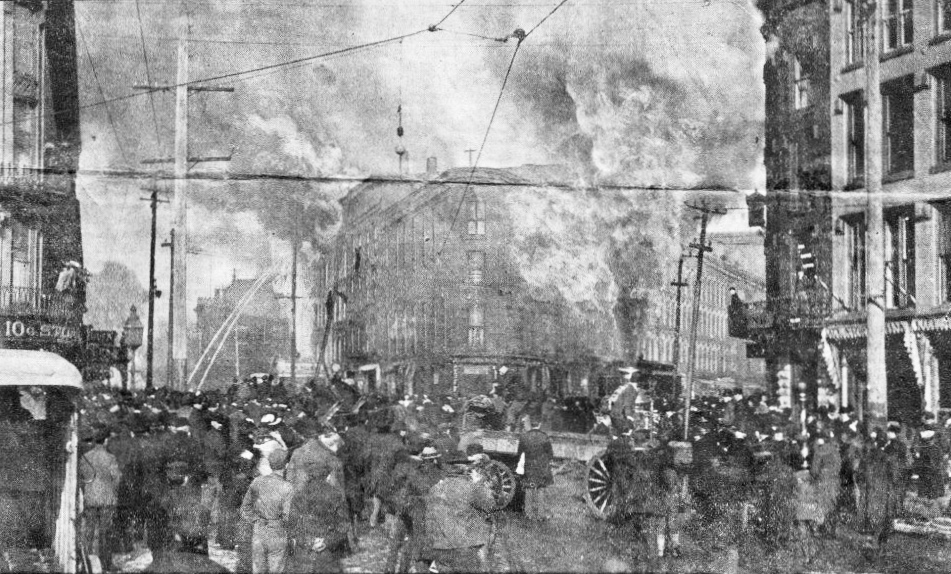
One of the fears the Watertown Daily Times noted was the fire spreading to other buildings.
From the start it was not a question of saving the Otis House. That was gone beyond the shadow of a doubt. It was simply a case of keeping the fire from spreading, from running up or down Court Street or Arsenal Street or from spreading across Court Street and getting a good start in what is said to have been the longest unbroken line of blocks in the country.
The fire did not seem to spread or grow, it simply flashed from one place to another instantaneously, and within a few minutes the Otis House was one huge bonfire, a raging volcano of flame.
As soon as the fire started, it was said that merchants and tenants of the adjoining buildings began removing their merchandise for fear that the fire would spread. Onlookers would help, and the Times noted, “soon Court Street was a representation of one vast 1st of May moving day” as the air was filled with smoke and heat.
Stores impacted in the Otis Block included Nill & Jess bakery and confectionery on the Court Street side; the Union clothing store; Guilfoyle’s undertaking rooms; the Empire Shoe Co.’s store; W. Scott’s Jewelry store; and Farley’s clothing store.
The Fairbanks Block would also be damaged in the fire, including the Black River Bakery and tenants, the firewall between it and the Otis Block most likely saving it from more serious damage, though the upper portion of the block was significantly damaged from flames spreading on the roof and subsequent water damage putting them out. The Scripture and Clark Block also caught on fire. Thomas H. Bradley’s store was located there, and he had most of his goods moved to the County Courthouse‘s lawn, then later to the State Armory.

The immediate task of the firemen was to rescue the guests from the hotel. Ladders and ropes were used on both Arsenal and Court Street sides. The Times noted, “If the people did not have on all the clothes that the conventions require, the rescuers did not stop for that.” Due to the efforts of all those involved, there were no fatalities, and those who suffered any serious wounds were treated at City Hospital.
There were several particularly close calls, however. Twice, the walls of the Otis House collapsed, once on the Arsenal Street side and the other on Court Street, sending bricks tumbling into the street below. Several firemen were hit by them but managed to continue.
Just when it was believed the fire was under control, a new blaze started in the cellar of the Mill & Jess store, where Police Sergeant A. S. Wood barely missed being struck by a flying tube caused by the explosion of a big steel tube of carbonic acid gas used for charging soda fountains.
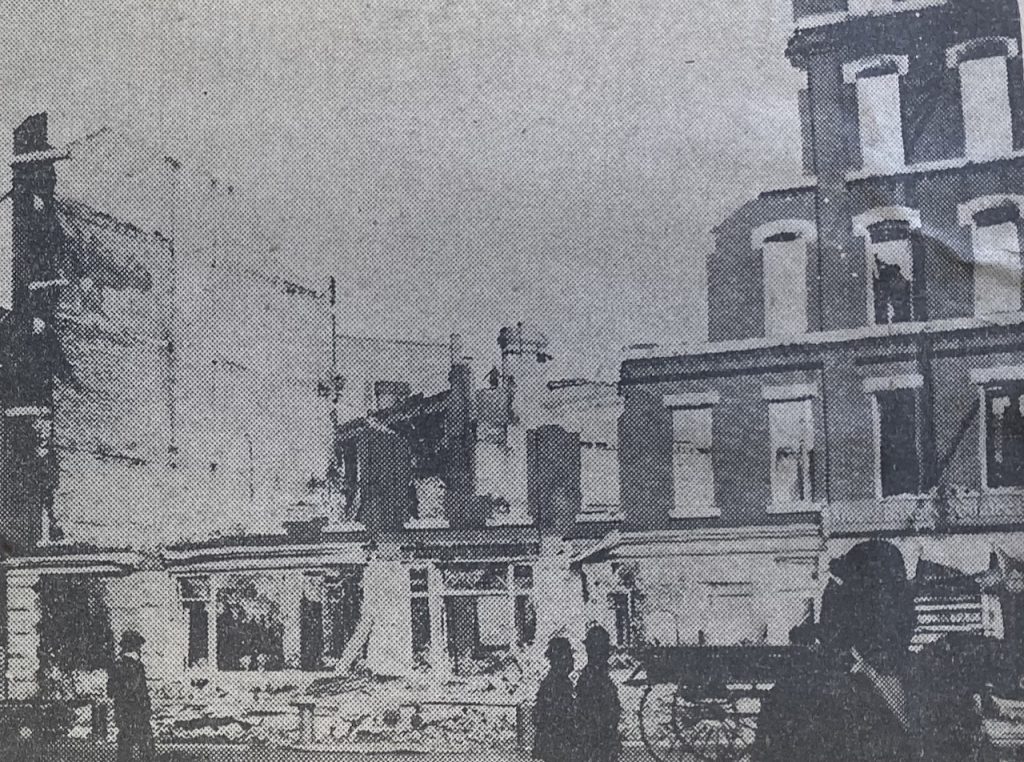
While the fire department(s) received accolades for preventing the fire from doing further damage, their job would continue for several days. The unstable walls and a tall chimney still standing, albeit wavering in the wind, continued to be hazards in the aftermath. Sidewalks would remain closed well into August and well into September before the piles of brick were finally cleared from the ruins.
The potential for what could have been an even worse conflagration prompted the city fire department to assess improvements, which ultimately resulted in the opening of the Arsenal Street fire station five years later, which would be the largest and most modern of its kind north of Syracuse. The city, however, would continue to have its fair share of devastating fires, the next being the 1919 Taggart Block fire, which was plagued by a number of firefighting equipment issues.
As for the Otis House, initially, it was reported that its heirs intended to rebuild it, with 125 rooms in the same location. By May’s end, they would change their mind, which left the Daily Times noting that the location of the Universalist Church and neighboring Harris House were now the prime location for another potentially large hotel. Four years later, Hotel LeRay, later the Electric Building, would open on that site, while the former site of the Otis House would become home to the Unity Building.
